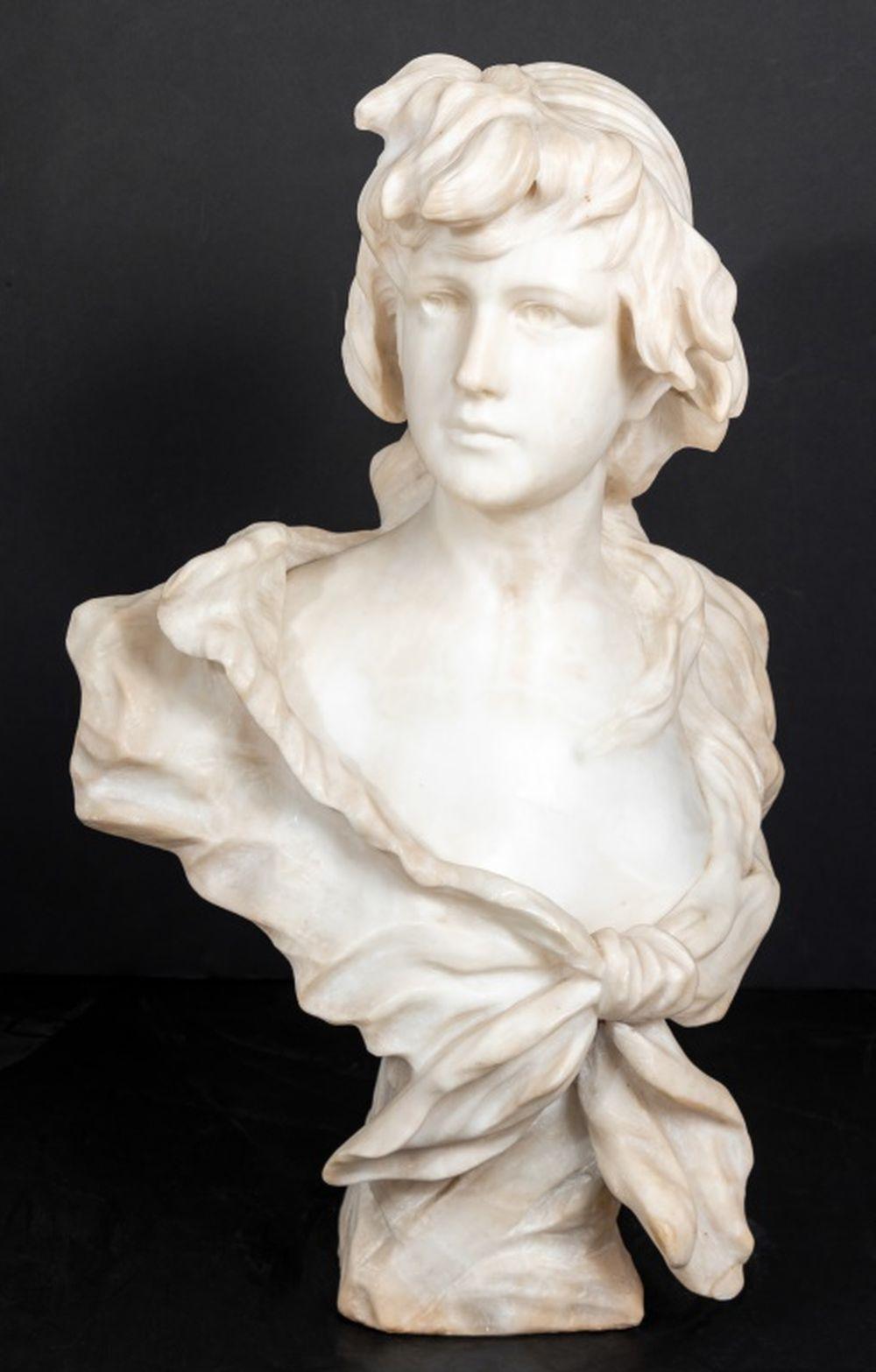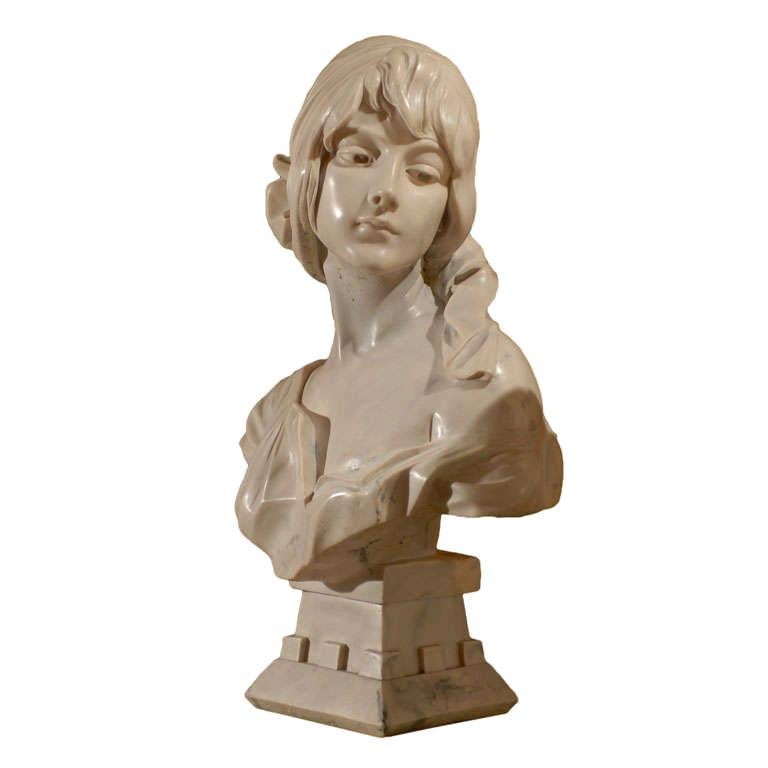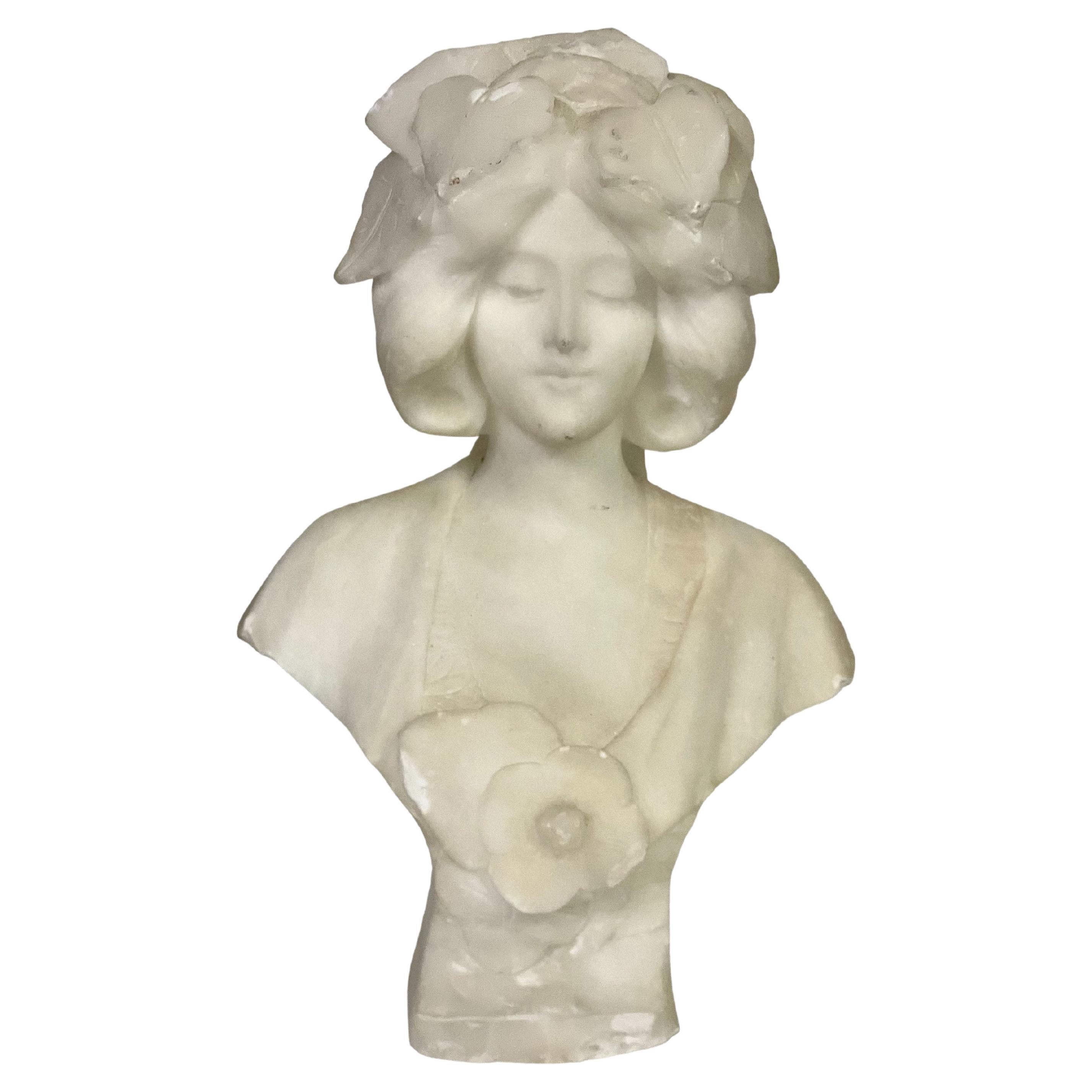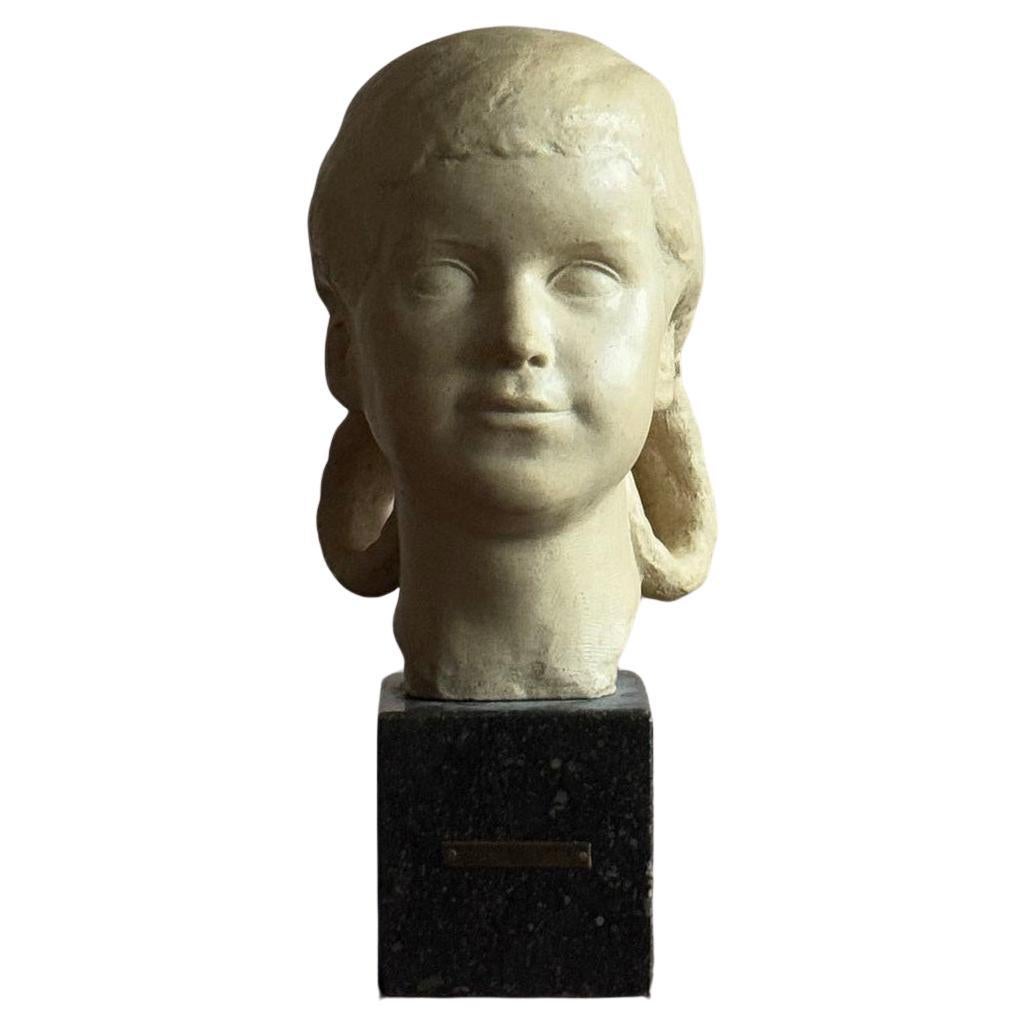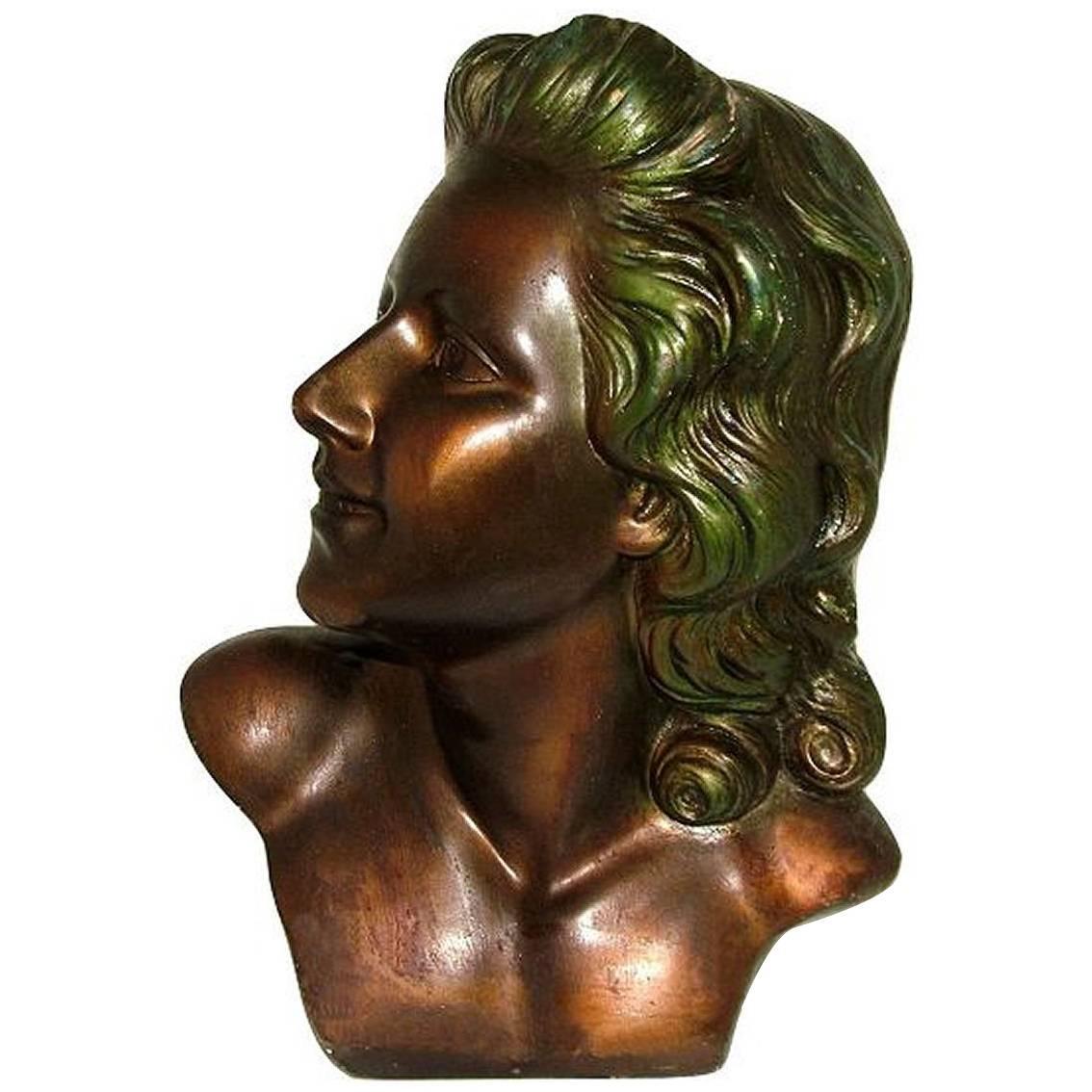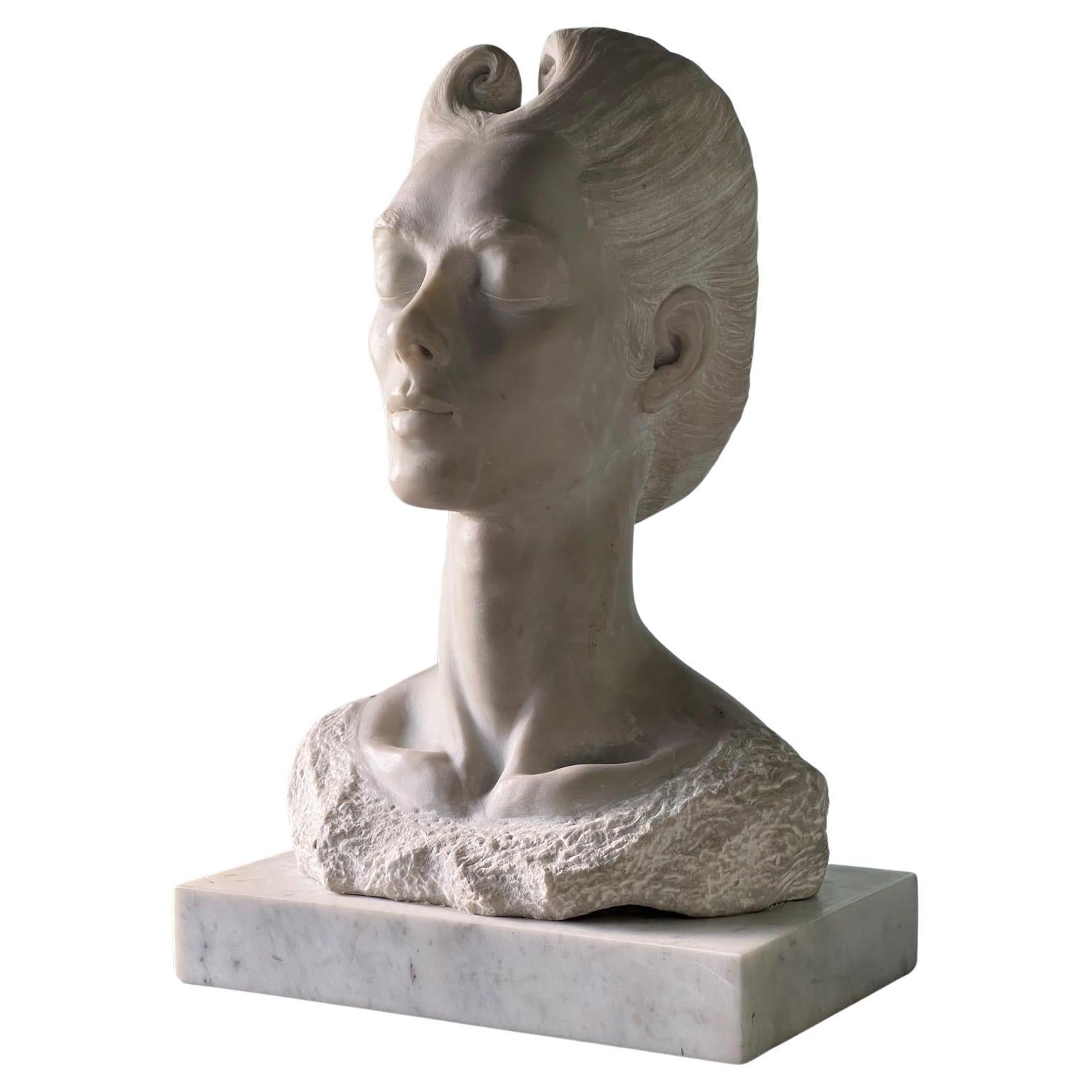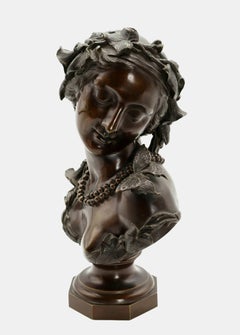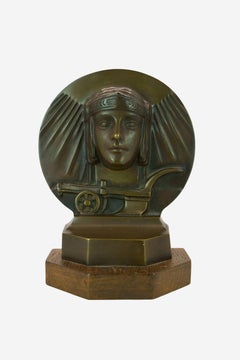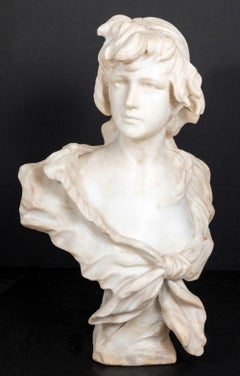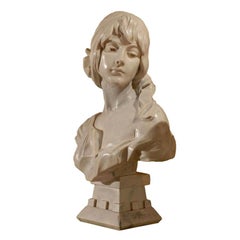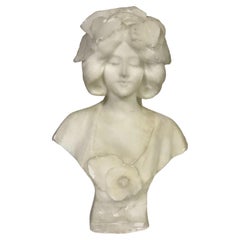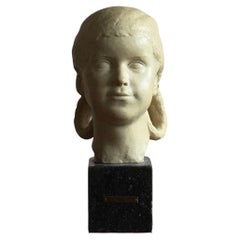Items Similar to Bust of a young woman / - Beauty of youth -
Want more images or videos?
Request additional images or videos from the seller
1 of 7
UnknownBust of a young woman / - Beauty of youth -c. 1900
c. 1900
$897.90
$1,122.3820% Off
£673.03
£841.2920% Off
€760
€95020% Off
CA$1,233.57
CA$1,541.9620% Off
A$1,377.16
A$1,721.4520% Off
CHF 721.61
CHF 902.0220% Off
MX$16,857.81
MX$21,072.2720% Off
NOK 9,164.48
NOK 11,455.6020% Off
SEK 8,640.94
SEK 10,801.1820% Off
DKK 5,785.40
DKK 7,231.7520% Off
About the Item
Anonymous, Bust of a young woman, c. 1900, artificial marble and gray onyx marble. 37 cm (height) x 37 cm (width) x 22 cm (depth), weight 17.2 kg. Signed “GURRINI” on the reverse.
- Neck with glued bookmark, partially dented and rubbed.
- Beauty of youth -
The almost life-size bust signed “Gurrini” on the reverse could come from the Kunstanstalt Schumacher & Co. in Osterode am Harz. From 1900 onwards, the company operated a sculpture manufactory in which many Italian artists worked. However, the name "Gurrini" is more Italianizing than Italian, as it would otherwise have to be "Guerrini". The signature is intended to indicate that the cast of the mamma has been sculpturally reworked and is therefore unique, as evidenced by the extremely delicate features of the face.
The portrait is inspired by Renaissance busts, and the combination with the dark onyx enhances the beauty of the young woman. In contrast to the Renaissance, however, no real person is portrayed here, but the young woman has been given form as such. The symmetrically cut eyes and eyebrows, the elongated nose leading to a narrow but full mouth, and even the pointed chin give concrete expression to the ideal of female youth. The result is not a dead form, but rather the figure gazing attentively at the world, as if she had turned her head slightly away by herself.
GERMAN VERSION
Anonymus, Büste einer jungen Frau, um 1900, Kunstmarmor und grauer Onyxmarmor. 37 cm (Höhe) x 37 cm (Breite) x 22 cm (Tiefe), Gewicht 17,2 kg. Rückseitig mit „GURRINI“ signiert.
- Hals mit geklebter Buchstelle, teilweise bestoßen und berieben.
- Schönheit der Jugend -
Die rückseitig mit „Gurrini“ signierte nahezu lebensgroße Büste könnte aus der Kunstanstalt Schumacher & Co. in Osterode am Harz stammen. Innerhalb der Firma wurde ab 1900 eine Bildhauermanufaktur betrieben, in der viele italienische Künstler tätig waren. Der Name „Gurrini“ ist allerdings mehr italienisierend als italienisch, da es ansonsten „Guerrini“ heißen müsste. Die Signatur soll aber verdeutlich, dass der Mamorguss bildhauerisch überarbeitet worden ist und damit ein Unikat vorliegt, was die äußerst filigranen Züge des Gesichts vor Augen führen.
Das Bildnis ist von den Porträtbüsten der Renaissance inspiriert, wobei die Kombination mit dem dunklen Onyx die Schönheit der jungen Frau umso mehr aufstrahlen lässt. Im Gegensatz zur Renaissance ist hier allerdings keine reale Person porträtiert, sondern der jungen Frau als solcher Gestalt verliehen worden. Die symmetrisch geschnittenen Augen und Augenbraunen, die auf einen schmalen und dennoch vollen Mund zulaufende gelängte Nase, selbst das spitz ausgeformte Kinn verleihen dem Ideal weiblicher Jugend einen konkreten Ausdruck. Dabei entsteht keine tote Form, vielmehr blickt die Dargestellte aufmerksam in die Welt hinein, als ob sie von sich leicht den Kopf gewendet hätte.

About the Seller
5.0
Gold Seller
Premium sellers maintaining a 4.3+ rating and 24-hour response times
Established in 2014
1stDibs seller since 2023
20 sales on 1stDibs
- ShippingRetrieving quote...Shipping from: Berlin, Germany
- Return Policy
Authenticity Guarantee
In the unlikely event there’s an issue with an item’s authenticity, contact us within 1 year for a full refund. DetailsMoney-Back Guarantee
If your item is not as described, is damaged in transit, or does not arrive, contact us within 7 days for a full refund. Details24-Hour Cancellation
You have a 24-hour grace period in which to reconsider your purchase, with no questions asked.Vetted Professional Sellers
Our world-class sellers must adhere to strict standards for service and quality, maintaining the integrity of our listings.Price-Match Guarantee
If you find that a seller listed the same item for a lower price elsewhere, we’ll match it.Trusted Global Delivery
Our best-in-class carrier network provides specialized shipping options worldwide, including custom delivery.More From This Seller
View AllBust of a young woman / - The Opulence of Beauty -
Located in Berlin, DE
Anton Nelson (i.e. Antoine Joseph van den Kerckhoven) (1849 Brussels - after 1910 ibid.), Bust of a young woman, c. 1890. Patinated bronze on cast base, 30 cm (total height) x 20 cm ...
Category
1890s Art Nouveau Figurative Sculptures
Materials
Bronze
Psyche / - Fulfilled longing -
Located in Berlin, DE
Jan Jozef Jaquet (1822 Antwerp - 1898 Brussels), Psyche, 1847. Black-brown and brown patinated bronze on a cast base. 30 cm (height) x 22 cm (width) x 12 cm (depth), weight 5 kg. Ver...
Category
1840s Realist Figurative Sculptures
Materials
Bronze
$1,417 Sale Price
20% Off
Reading Woman / - The golden glow of imagination -
By Albert-Ernest Carrier-Belleuse
Located in Berlin, DE
Albert-Ernest Carrier-Belleuse (1824 Anizy-le-Château - 1887 Sèvres), Reading Woman, around 1880. Polished bronze mounted on a cast base. 33 cm (total height) x 9 cm (length) x 9 cm ...
Category
1880s Realist Figurative Sculptures
Materials
Bronze
$2,268 Sale Price
20% Off
Sun God Ra / - The Light of Knowledge -
Located in Berlin, DE
Anonymous, Sun God Ra (bookend), 16 x 13.5 x 6 cm (depiction), 17.5 x 13.5 x 8 cm (with pedestal), patinated brass, c. 1935.
- Nose slightly rubbed, otherwise very good condition
...
Category
1930s Art Deco Figurative Sculptures
Materials
Brass
$453 Sale Price
20% Off
Bing & Grondahl Figure Playing Girl / - Seriousness of the game -
Located in Berlin, DE
Adda Bonfils (1883-1914), Playing Girl, designed c. 1920, made between 1966 and 1969, model number 1995, first choice. Porcelain with underglaze painting. 13.5 cm (height) x 9 cm (le...
Category
1920s Realist Figurative Sculptures
Materials
Porcelain
Young Roman / - Youthful Sprezzatura -
Located in Berlin, DE
Fritz Heinemann (1864 Altena - 1932 Berlin), Young Roman, 1892. Brownish patinated bronze on a cast round plinth, mounted on a red marble base (8.5 cm high), total height 36 cm, dime...
Category
1890s Realist Figurative Sculptures
Materials
Bronze
$850 Sale Price
20% Off
You May Also Like
Female Figure Bust
Located in Astoria, NY
Italian School Female Figure Carved Alabaster Bust, late 19th century, the portrait with tied back hair and flowing dress tied at her breast, on a rockwork plinth, unsigned. 26" H x ...
Category
Late 19th Century Italian School Figurative Sculptures
Materials
Alabaster
Hand Carved Marble Bust of Female
Located in Atlanta, GA
Beautiful hand carved marble bust of a young girl
DIMENSIONS: H 25 in. x Dm 15 in.
H 63.5 cm x Dm 38.1 cm
CW3389
Category
Early 20th Century French Busts
Materials
Marble
Petite Alabuster Bust of a Young Lady
Located in LA CIOTAT, FR
This adorable petite alabaster bust of a young lady, her hair loosely styled and adorned with cascading leaves, exudes an air of grace and serenity. Her eyes are half shut and her fa...
Category
Early 20th Century French Busts
Materials
Alabaster
Painted terracotta bust of a girl
Located in Grange-Over-Sands, GB
A painted terracotta bust of a girl, Chantal Marie, dated 1954 by George Vindevogel (1923-1977) Dimensions: H 36cm
W 17cm
D 19cm
Base 10.5 x 10cm
Category
Vintage 1950s Busts
Materials
Clay
Beautiful Art Deco, French Bust of a Young Woman
Located in Devon, England
A really lovely French, Art Deco bust of very high quality. She's lifesize and shows the profile of a young Parisian woman with a victory roll hairstyle she excludes glamour. She's m...
Category
Mid-20th Century French Art Deco Busts
Materials
Plaster
An English Carved Marble Bust Of A Lady
Located in London, GB
In the realm of artistic prowess, Doris Gerrard R.B.A stands as a figure of profound talent and unfulfilled promise, as articulated by the esteemed English writer, playwright, and pu...
Category
Vintage 1930s English Busts
Materials
Marble
